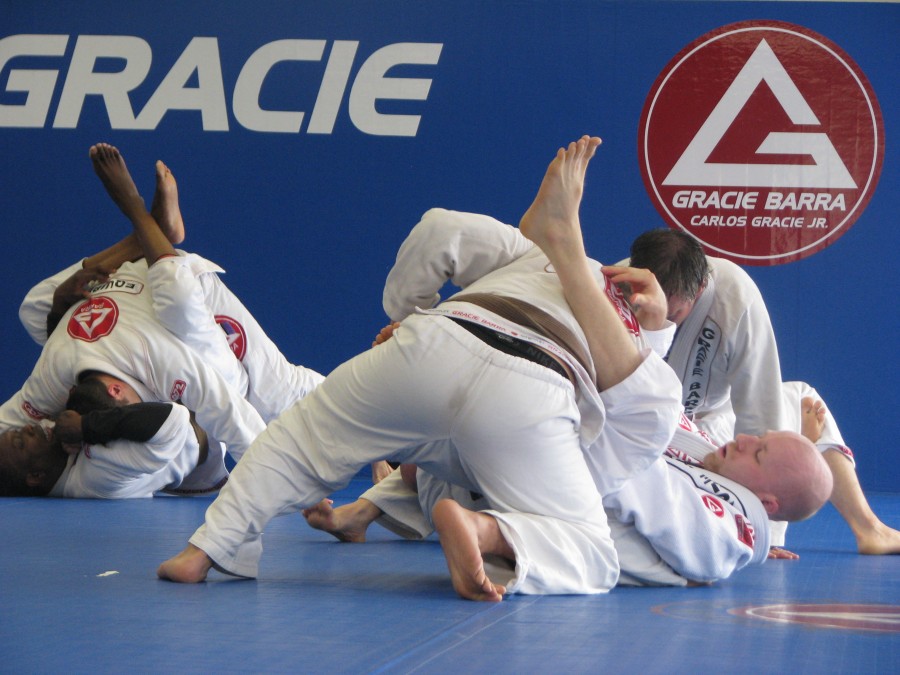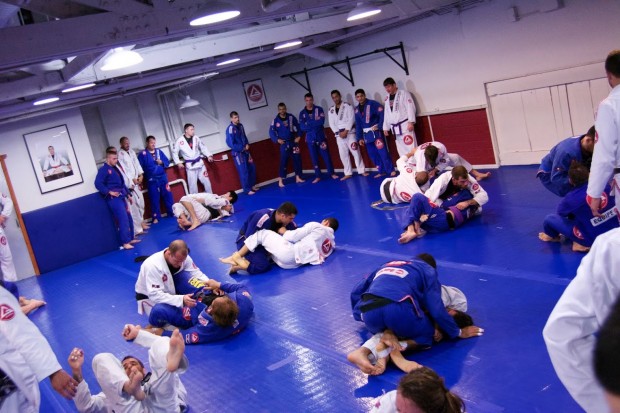How do You Roll? : Rolling Hard vs. Rolling Light
This is one of those debates that continues on internet bjj message boards. The young competitors say that “Of course you have to roll 100%. In the competition, your opponent is not taking it easy on you.” And they are correct!
read also: 5 Tips for BJJ Over 35
Advantages of Hard Rolling:
One of the strengths of martial arts like judo, wrestling, muay thai,. boxing and brazilian jiu-jitsu is the “live” element of the sparring. Learning to apply your techniques against a FULLY RESISTING opponent is what makes these disciplines so effective. You find out in a hurry if you can really execute those techniques of yours or not!
It is one thing to drill techniques on a cooperating partners as you learn the mechanics. Your technique is crisp and the movements exact. It is entirely a different thing to try to perform that same technique when your opponent wants no part of it. The technique starts to fall apart and you learn where the break points are of the move.
A less obvious benefit of rolling hard is the psychological training that takes place.
As one gets exposed to the adrenaline of a high intensity roll, you are less likely to tighten up or freeze in tight situations. The ability to think clearly in stressful situations is a valuable thing for a grappler – both on and off the mat.
The intensity of an opponent (especially new students who bjj who use all of their strength and speed) is something that all students of bjj must learn how to deal with. The workout that you get from harder rolling is unequalled.
There is a humorous saying that is very true: “Training is like fighting with a Gorilla. You don’t stop when you’re tired. You stop when the Gorilla is tired!”
This is different than many other forms of exercise where you can put down the bar in weight training or slow your pedaling for a breather while cycling up hill.
You are forced to match the pace of your opponent and this pushes us past our comfort zone and further than we would go by ourselves.
Advantages of Light Rolling:
Many experienced guys in the academy prefer to roll at a more moderate pace and emphasize technique over speed and explosive movements. And they are also correct!
If we look at our bjj as a longer term, lifestyle (as opposed to shorter term tournament victory goals) we recognize the need to train in such a way as to minimize injuries and prolong our participation in jiu-jitsu.
Unfortunately, the risk of injury is inherent in all combat sports and bjj is no different. we must take steps to protect ourselves so that we can continue to get on the mat month and after month without interruptions.
Rolling at a lighter intensity carries a lighter risk of injury and especially important for those jiu-jitsu practitioners over the age of 35. The Gracie Barra philosophy of “Jiu-jitsu for Everyone” includes those students who may be professionals in other careers and yet wish to train several times a week and learn the art of jiu-jitsu.
These students have different needs than the 20-something competitors and must adjust their training accordingly.
Certainly, there is room for some higher intensity sparring, but longevity and safety are first and foremost.
The focus is on using technique and exchanging positions in the rolls, NOT on just winning by any means necessary (ex. strength and athleticism at the expense of proper technique).
Here are 2 excellent videos of Master Carlos Gracie Jr. rolling.
Video 1 Professor Marcio Feijoa and Master Carlos Gracie Jr.
Rare Footage – Master Carlos Gracie Jr Competitive Sparring
The rolls are competitive and Master Carlos Gracie Jr. is applying realistic pressure, but the execution of the moves is smooth and technical. Master Carlos Gracie Jr. continues to train into his 60’s with this approach to rolling.
If injury is statistically the largest reason why people discontinue training bjj (source: GB ICP 5), then we must train in a way that allows us to show up at the academy every week.
read also: Top Game or Bottom Game?
So, what is the correct answer?
You need BOTH types of rolling to have a complete jiu-jitsu.
Hard rolling to prepare you for the realities of a fully resisting opponent.
Lighter, technical rolling to develop your transitions and minimize injuries.
Credits: Mark Mullen
Gracie Barra Black belt based in Taiwan
Twitter: @MarkMullenBJJ


